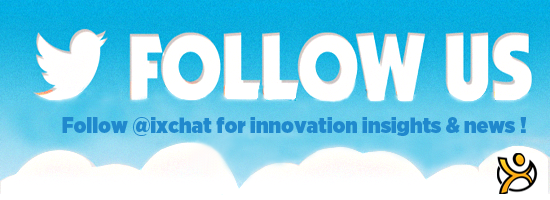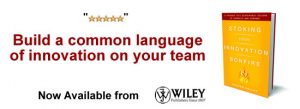Are You a Change Leader?
 The power is in the engine, but the wheel is in the bridge.
The power is in the engine, but the wheel is in the bridge.
When Lou Gerstner took over as CEO of IBM in 1993, he took the reins of an old and prestigious institution with a rich history. Gerstner had no experience in the computer industry, but he did know about leadership. His resume included senior positions at American Express and McKinsey & Company, and a spot as CEO of RJR Nabisco.
Taking over at IBM meant he would need every bit of that leadership prowess: IBM had suffered a multi-billion dollar loss and was burning cash.
“There’s been a lot of speculation as to when I’m going to deliver a vision of IBM [but] the last thing IBM needs right now is a vision,†Gerstner said at his first press conference. He needed to make some tough decisions and get his new team members working together effectively – fast.
Gerstner turned IBM away from the brink of bankruptcy and transformed it into a service and consulting business that is still thriving today. Corporations all over the world are using IBM as their outsourced technology providers.
But the question remains: How did he motivate his workforce to come together in those dark days and create the juggernaut that IBM is today?
Gerstner famously acknowledged IBM’s culture and history, picking up on the particular behaviours he wanted to grow: innovation and flexibility that would embrace the major market changes taking place. What had been a weakness of the company (and drove losses) before he took it on had suddenly become a strength.
Why didn’t it work at JC Penney?
Ron Johnson didn’t have the same good fortune. Johnson became the CEO of American retailer JC Penney after doing remarkably well at Apple. Unfortunately, his efforts brought with them not growth and innovation, but spiraling sales and angry stakeholders.
Fired after just 17 months in the job, J.C. Penney showed Johnson the door after the former Apple executive failed to deliver results at the nationwide department store.
Gerstner and Johnson approached their jobs in very different ways. While Gerstner was busy transforming IBM by building on its strengths, Johnson attempted to throw the baby out with the bath water by moving away from JC Penney’s low cost model, going premium and mimicking the Apple experience.
JC Penney customers were not interested in products that ultimately just seemed more expensive.
The message here: JC Penney isn’t Apple.
Teams, committees, and organisational leadership
So what happened?
These stories illustrate the importance of leadership on an organization. Although Gerstner and Johnson had both previously been hugely successful players, in their new ventures one succeeded and the other experienced
ignominious defeat.
We could spend hours dissecting exactly what happened, but I tell the stories to demonstrate the impact good leadership can have. Ron Johnson had ideas, but not the leadership acumen to pull it off. He couldn’t align his leadership.
We often refer to the “leadership team” or the “management team” in business. But more often than not they are not a team at all. In fact they are the opposite. They are committees.
First, let’s define a team. A team is a group that succeeds or fails together. Committees, on the other hand, often result in decisions that suit some but not others.
For example, the top management team in an organisation comprised of finance, operations, manufacturing, sales, marketing, and R&D, can either hit or miss their goals. They might cooperate and collaborate under mutually beneficial circumstances, but there is no imperative, for instance, for sales to sacrifice resources to operations.
If this team was truly a team, they would be willing to succeed or fail together. Sales would give up some budget and resources to operations to ensure they’d be able to deliver – for the good of the company.
Major change efforts require synchronisation and for teams to really be teams. To do that, leadership must align individual and organisational goals. Doing so ensures that individual goals and outcomes support the overall direction of the enterprise.
Telstra: sparking a cultural transformation
Consider Telstra, a company that recently completed a cultural transformation. Three years ago Telstra was facing the reality that the fixed line business, once the cornerstone of their earnings, was facing imminent demise. After all, today there are more mobile phones in Australia than people. To compete in this new world of telecommunications, Telstra needed to move from an engineering and “we own the pipes” mentality to that of what they called “customer advocacy.â€
When it comes to a cultural transformation, first things first. Telstra started with their leadership. CEO David hodey carefully outlined what “customer advocacy” meant for all levels of the organisation and insisted the 300 top anagers of the 40,000 strong employee base exemplify these behaviours. He revamped reward and recognition programs and initiated one-on-one coaching and development plans to help staff along the journey. To be sure, not all stuck around. But Thodey pressed onward, confident that leadership alignment would be essential to the transformation.
Telstra has made significant inroads, dramatically reducing referral to the telecommunication ombudsman by 26% and overall calls from consumers by 20%.
Although the company’s fixed line revenue declined by 6.1% again this year, Telstra has added 1.6 million new mobile customers in the past 12 months, bringing their total to 13.8 million. It has 2.6 million fixed broadband customers and 1.4 million on bundled plans. In addition, the company increased its business in Hong Kong by 475,000 to reach 3.5 million customers.
Leadership is critical to driving change and transformation because above all, leaders must exemplify the change in behaviours they wish to see.
Want to Learn More About Change Management?
I’ve created a free eBook on Fundamentals of Change Management. In this ebook you’ll learn the fundamentals of change management, why it’s critical to achieve business outcomes, as well as tools and techniques to make change work for you. Click Here to Download
Wait! Before you go…
Choose how you want the latest innovation content delivered to you:
- Daily — RSS Feed — Email — Twitter — Facebook — Linkedin Today
- Weekly — Email Newsletter — Free Magazine — Linkedin Group
 Daniel Lock helps organisations unlock value and productivity through process improvement, project & change management. Find out more about him at daniellock.com.
Daniel Lock helps organisations unlock value and productivity through process improvement, project & change management. Find out more about him at daniellock.com.
NEVER MISS ANOTHER NEWSLETTER!
LATEST BLOGS
The Evil Downside of Gift Cards
This past holiday season I saw probably one too many articles trumpeting the value of gift cards to retailers and how they are a great thing for retailers. My skeptic side starts coming out as I see article after article appear, and I have to start asking “Is the increasing prevalence of gift cards as a holiday gift (primarily Christmas) a good thing for retailers?”
Read MoreWhy the iPhone will not succeed – Yet
The new Apple iPhone is set to launch on June 29, 2007 and the press and investors are making it a darling. Investors have run Apple’s stock price up from about $85 per share before its announcement to $125 per share recently, but the iPhone still will not succeed – at least not yet.
Read More



